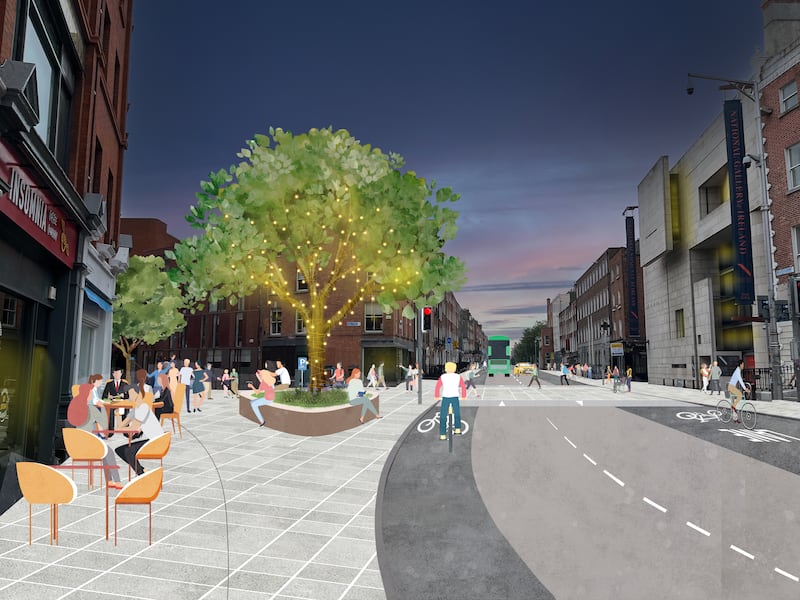Plans to reallocate road space across Dublin city centre from private cars to buses, cyclists and pedestrians have been “overwhelmingly” endorsed by the public, according to a report to be presented to Dublin city councillors this week.
More than 80 per cent of submissions supported the Dublin City Centre Transport Plan, which aims to end the dominance of cars on the city’s streets.
However, the operators of Grafton Car Park, formerly Brown Thomas Car Park, said the plan “actively seeks to close” its business and would “decimate city centre retail business”.
The Dublin City Council and National Transport Authority (NTA) plan would ban cars from sections of the north and south quays, close to O’Connell Bridge; make Parliament Street traffic-free; and proposes new civic plazas at the Custom House and at Lincoln Place near the back entrance to Trinity College.
READ MORE
The plan, made available for public consultation last autumn, aims to “remove traffic that has no destination in the city” with two out of every three motorists passing through, rather than stopping in town. The restrictions would not prevent motorists from accessing the city centre, but would reduce the number of routes that can be used to drive across the city.
More than 3,500 submissions were received by the council, with 81 per cent supporting reduced road space for private vehicles “to facilitate a more efficient public transport system”. The concept of more traffic-free “civic spaces” in the city centre was supported by 82 per cent of respondents.
While the majority of responses to the plan were positive, some businesses raised concerns about their operations.
Diageo, which owns the Guinness brewery, queried how it would reach Dublin Port from its St James’s Gate premises if Bachelors Walk and Aston Quay were not accessible.
The council said it acknowledged the contribution of Diageo to the city, but “maintaining a route through the very core of the city for large HGV vehicles as requested is extremely difficult”. More than 90 per cent of the five-axle lorries travelling on Bachelors Walk during the day “are movements from Diageo”, the council said. “We will engage directly with Diageo regarding their submission and how to maintain access and egress.”

A number of car park owners sought further consultation on access to their businesses, but Stanberry Investment Limited, who own the Grafton Carpark was “strongly opposed to the plan” the council said.
“Their submission also states that ‘the underlying principle of the draft plan is to reduce private car access by two thirds’,” the council said.
“The plan does not seek to reduce private car access by two thirds, rather it is to reduce the through traffic element in the city centre. Access to the city centre will be maintained with some potential changes in routings,” it said. “The plan does not seek to close any business and in fact the aim of this transport plan is to ensure the continuance of businesses in the city centre while acknowledging that changes are needed in the current traffic arrangements.”
Submissions from elected representatives “were very positive” overall, the council said. However, a submission from Senator Michael McDowell complained the plan “utterly discounts any positive effects of private vehicle access to the city”.
Access for people with disabilities was raised in a number of submissions. “The number of disabled spaces will not decrease and if any are to be moved they will be relocated as close as possible to their current location,” the council said.
There was strong support from city residents for the plan. However, residents of Pearse Square feared it would divert more cars into their area, which already had levels of traffic they described as “horrendous”. The council said it has already agreed to meet these residents to discuss their concerns.
- Sign up for push alerts and have the best news, analysis and comment delivered directly to your phone
- Find The Irish Times on WhatsApp and stay up to date
- Our In The News podcast is now published daily – Find the latest episode here














